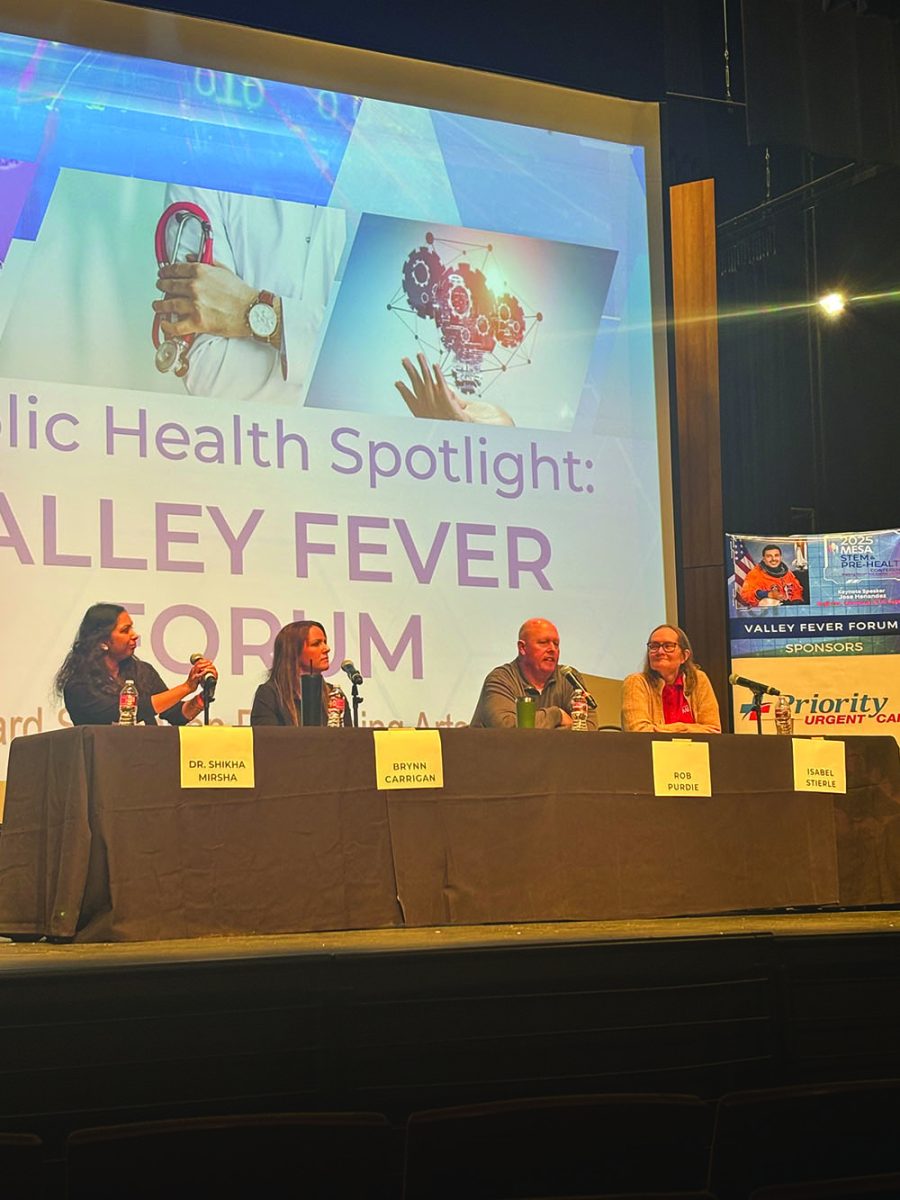BC’s William M. Thomas Planetarium hosts starlight show and film about space
September 28, 2018
Prof. Nick Strobel greeted people entering the William M. Thomas Planetarium at Bakersfield College and took tickets for the film NASA: From Dream to Discovery on Sept. 20. After the introducing himself Strobel proclaimed, “You are actually underneath the largest planetary dome in all of the Central Valley.”
After Strobel’s short description of the difference between a planetarium and observatory (observatory has a telescope), Strobel started his pre-show routine, the Bakersfield Night Sky. The Bakersfield Night Sky is a fifteen-minute tour of the visible planets and stars that appear throughout the night in Bakersfield.
Strobel told the audience the difference between a star and a planet when being viewed without a telescope.
“They look brighter than any other star in our night sky-but that nice steady glow will tell you that you’re looking at a planet rather than a star,” said Strobel.
After showing all of the planets Strobel started with the constellations.
Strobel advised how to identify everything from the Big Dipper to the Zodiac constellations that are in the night sky. Strobel also advised how to locate certain stars such as Vega, which is in the Lyra constellation. He also showed the audience how to locate other features of the night sky such as the North Star, which is found by using part of the Big Dipper as a pointer.
After the night sky routine, Strobel introduced the feature show, NASA: From Dream to Discovery.

The audience at the William M. Thomas Planetarium at Bakersfield College waits for showing of “NASA: From Dream to Discovery” to start.
The film was approximately 45-minutes long about how the universe is explored.
Orbiting above the earth’s atmosphere is the Hubble telescope. The Hubble Telescope is described as a complex system of instruments.
According to the film, Limitations of weight and size of the telescope challenges engineers to make sure the telescope can do its job. Today, NASA is working on the James Webb Telescope. “The Webb,” as it is called, is designed to see farther than any other telescope has in the past. It is considered a “space-based observatory.” The Webb is considerably larger than the Hubble Telescope, which is in low earth orbit. According to NASA’s website, the Webb telescope will not orbit the earth, it will orbit the sun.
In the show’s finale New Horizons, the NASA Spacecraft that was launched in 2006 to investigate Pluto, described the difficulties of flying through space.
New Horizons took ten years to reach Pluto. It traveled a myriad of miles to get to its destination. The spacecraft was so far away that when it finally arrived at Pluto, the signal took an entire year to get back to NASA to reveal what it had discovered.





